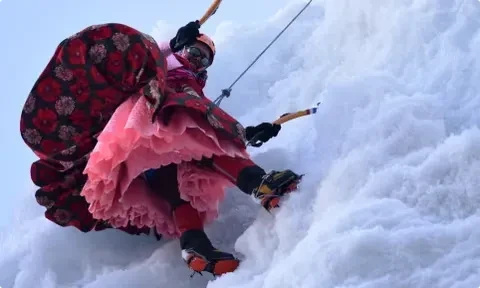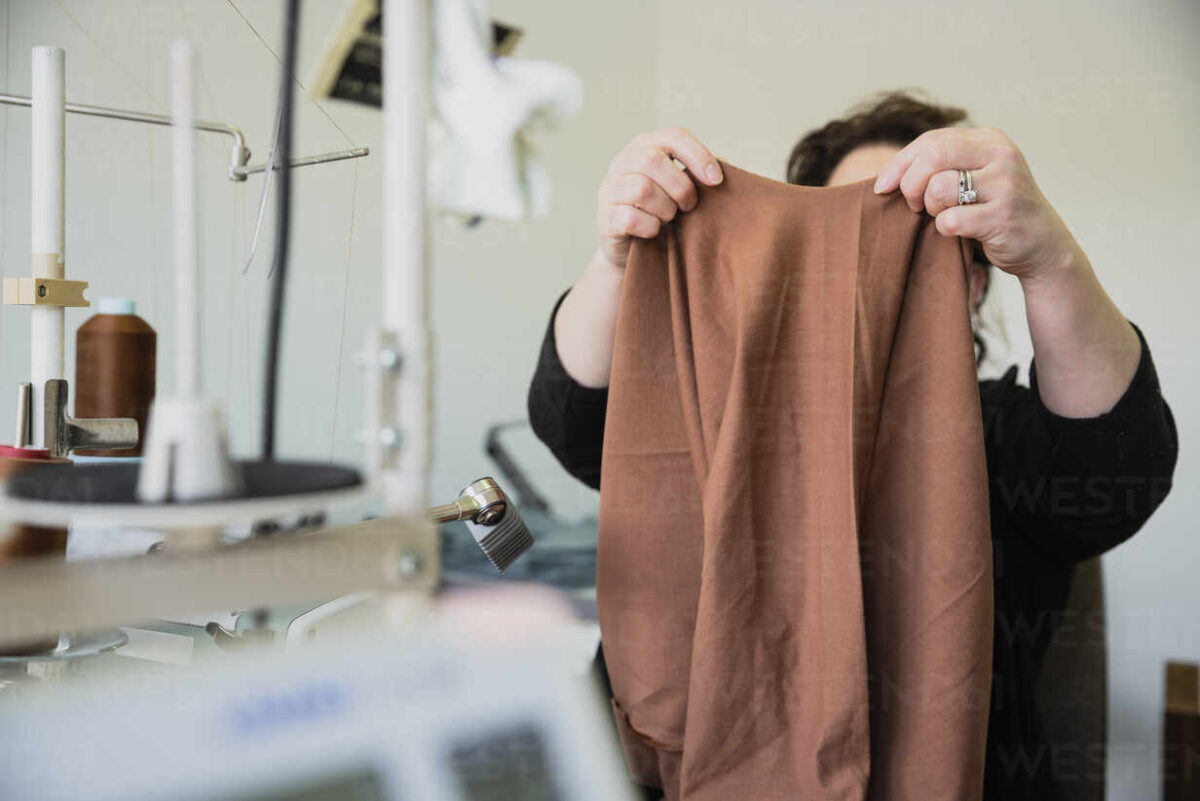At 5,200 meters above sea level, two women sit at a stone table, surrounded by towering mountains. Huayna Potosí, a 6,088-meter peak in Bolivia’s Cordillera Real, looms ahead, its glacier shimmering in the afternoon sun. A narrow path winds across its icy surface, the goal for many climbers.
Cecilia Llusco, an Indigenous Aymara woman, nibbles on crackers with caramel spread and sips coca tea, her eyes fixed on the peak. “It’s not always about reaching the summit,” she reflects. “Sometimes it’s about enjoying the mountains and going as far as you can without suffering.” As clouds drift in, veiling all but the tallest peaks, Llusco shares her thoughts on life. “It’s not about getting to the top but enjoying the journey. The most important thing is to be happy.” At 39, Llusco is one of just 10 Indigenous female mountain guides in Bolivia. Her long black hair, adorned with wool in the colors of the Bolivian flag, is tied in two braids. She proudly wears a traditional Aymara skirt, called a pollera, along with a pink top and fleece. “I’ve never worn trousers to climb a mountain, and I never will. Our polleras don’t hold us back.”
Though Llusco has spent her life climbing Huayna Potosí, a defining moment came in December 2015, when she and 10 other women summited the peak. They called themselves the cholitas escaladoras—the climbing cholitas. Once used as a derogatory term for Indigenous women, “cholita” has been reclaimed by the group, symbolizing empowerment and pride in their heritage. Huayna Potosí is a place of deep connection for Llusco. “I feel free, like I’m escaping, and the mountain is calling me,” she says. As if on cue, a condor—the national bird of Bolivia—soars overhead. The mountain’s name means “young mountain” in Aymara, Llusco’s first language. It is a sacred site where climbers leave offerings of coca leaves and alcohol to ask for safe passage.
Tourists often attempt the three-day expedition to Huayna Potosí’s summit, known as one of the most accessible climbs above 6,000 meters. Still, altitude sickness frequently forces many to turn back. For six years, Llusco has led expeditions on Huayna Potosí and other Bolivian mountains, but her journey began long before that. At just eight years old, she started working in tourism alongside her father, a trekking guide. “I saw how much my father carried and wanted to help,” she recalls. “I loved meeting foreigners and learning about them.” Her dream of summiting Huayna Potosí was born on those early trips to the base camp.
Today, base camp is a simple shelter equipped with bunk beds, a small kitchen, and a dining room. As Llusco prepares vegetables for lunch, she also helps her group gear up with boots, helmets, crampons, and ice picks. Together, they hike to the glacier’s edge, where Llusco teaches them how to walk on ice. The best climbing months in Bolivia run from May to November, making Llusco’s work seasonal. Despite her years of experience, she still rents most of her gear, and her well-worn hiking boots are due for replacement—a costly challenge she faces as she continues her journey, both on the mountains and in life.







